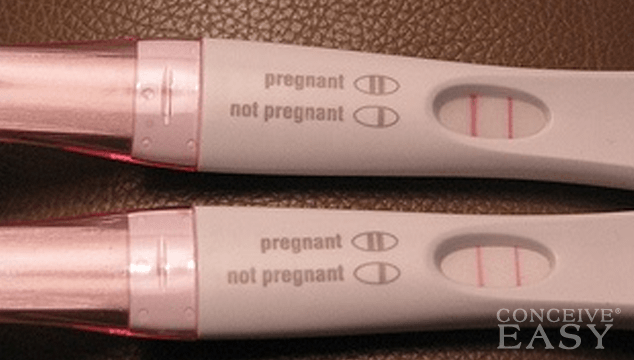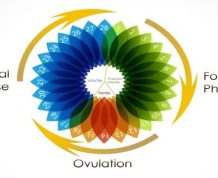I am sure there are many women among our readers who have found themselves unable to decide what a faint line means on a home pregnancy test. I can assure you, there are many other women out there who find it similarly difficult to decipher the meaning of the faint line. Claim Your 20 Free Pregnancy Tests – Click Here
The answer, however, is quite simple. If you see a faint line, that is a line, regardless of the saturation. When it comes to home pregnancy tests, as a rule of thumb, lines are absolute; they indicate a positive result! However, there are a few special scenarios that are an exception to this rule and we will be taking a look at each one of them in a short while.
Further below I compiled a list of the most common cases of when a faint line is actually not a positive result. However, before we dive into the possible causes of a false-positive test, let us take a look at how a home pregnancy test actually works. This will help us understand everything that can go south with it.

Home pregnancy tests usually come in two forms: dip tests and instream tests. In case of a dip test, you are provided a clean urinal container into which the test strip is dipped, while midstream tests require you to hold the test strip in your stream of urine.
There are two lines that can be visible on the display. A control line (C) that is always visible and it means that the test strip works properly, and a test line (T) that is only visible if the test result is positive. Both methods indicate pregnancy by capturing the hCG concentration level in the urine.
hCG (human Chorionic Gonadotropin) is a hormone that enters our system 6 to 12 days after conception and for the following weeks its volume doubles every two or three days. The more hCG the urine contains, the darker the test line will be.
Now, let’s take a look at the cases when the faint test line can actually indicate a negative test result:

The most common reason for getting wrong home pregnancy test results is failure to follow the manufacturer’s instructions. In order to avoid wrong results, the most important thing is to read and follow the instructions carefully.
For example a very important thing to keep in mind is, that most tests have a reaction time, generally 5-10 minutes. For a verified negative result the test should be read within the reaction time period mentioned in the manufacturer’s instructions.
The instruction should also mention a time period, usually 10 minutes, after which the test result is unreliable. This is due to the fact that after some time the urine starts to evaporate and an evaporation line will slowly develop on the display which can be easily misinterpreted as the test line. One thing to help distinguish a test line from an evaporation line is the color of the line: while test lines are usually pink, the evaporation line has no color, it looks like a shadow.

Timing the test is also very important. You must wait at least ten days after ovulation, but it’s safest to wait until after the first missed period. As mentioned before, it takes time for the hCG hormone to accumulate in your system, and the less sensitive the test is, the more hCG it takes for the test line to show up. You might want to try a period tracker calendar, or some kind of chart to always have the necessary data available to you.

The sensitivity level of home pregnancy tests varies from product to product, but as a general rule of thumb, the more expensive the test, the more sensitive it is. The sensitivity level is expressed in mIU (milli-international units), and can generally range anywhere between 20mIU and 100mIU. So depending on the sensitivity level of the product, you may have to wait a little longer before you take the pregnancy test.

Although not a requirement anymore, it is considered best practice to take the test with the first morning urine to avoid a diluted urine specimen. hCG concentration is highest in the morning, so it is less likely to give faint results.

There is also a 20-30% chance per conception for a chemical pregnancy (early miscarriage), which means that despite the initial hCG presence in your body, a miscarriage occurred. In this case, you are not technically pregnant.

Taking medications containing hCG can also cause a faint test line as the test is determined by hCG levels. If you are taking medications that has the hormone in them it can give a false positive.

If none of the above explains the faint test line you got, then you may want to take the test a second time a few days after the first one just to make sure. If the first result was positive, then the test line should become bold a few days later due to the exponential hCG production pattern. If you you are still unsure about your results, you may want to contact your health care provider and ask for professional advice and maybe a blood test.

As you can see, in most cases a line, no matter how faint, or how bold, indicates pregnancy. Of course if you follow the advice above, you can double-check the results, but a health-care specialist will also be more than happy to assist you. But the bottom line is, chances are, a bundle of joy is coming your way, so take very good care of your health!










Comments